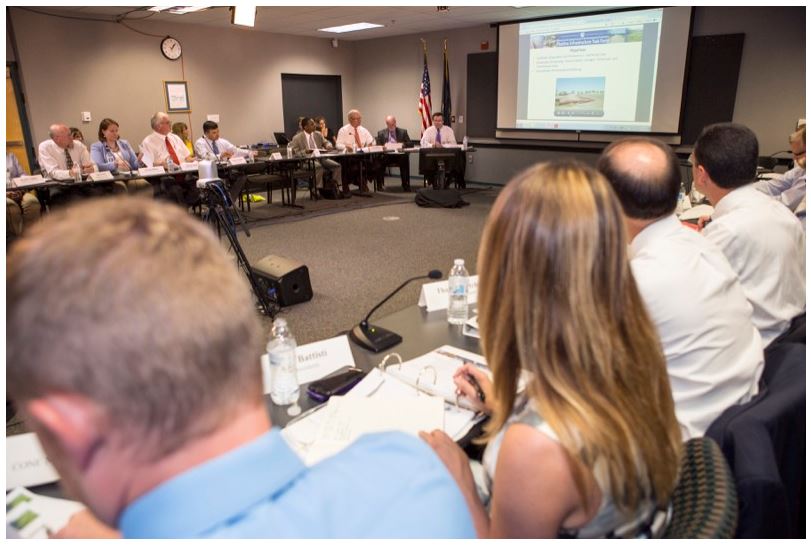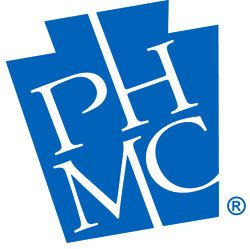In May of 2015, Governor Tom Wolf appointed 48 people to serve on the newly-created Governor’s Pipeline Infrastructure Task Force, which was charged with creating a set of recommendations for responsibly guiding the extraction and transportation of natural gas in Pennsylvania. The purpose of the recommendations was to suggest best practices that would avoid or lessen environmental, community and cultural resources impacts and address safety issues. Below is the who, what, when, where, and how of this task force, the PA SHPO’s role, and the group’s accomplishments.
Why did the Governor create this task force?
In the next decade, Pennsylvania will undergo a substantial pipeline infrastructure build-out to transport gas and related byproducts from thousands of wells throughout the state. Governor Tom Wolf’s Pipeline Infrastructure Task Force developed a set of recommendations to help Pennsylvania achieve responsible development of natural gas pipeline infrastructure in the commonwealth. The PA SHPO played an important role in this task force because we assist state and federal agencies in complying with their responsibilities under the National Historic Preservation Act of 1966, as amended, and the Pennsylvania History Code. Project review staff work closely with agencies and their representatives to determine if their projects will impact significant historic resources, and, if so, how to address and resolve those effects.

Who participated?
Those appointed to the task force included, but were not restricted to, state agency officials and commission members, representatives of relevant federal agencies, county and municipal governments, environmental groups, energy companies and legislative appointments. The force was overseen by former Department of Environmental Protection Secretary John Quigley. A complete report was to be prepared and presented to the Governor within an ambitious 8-month schedule from July 2015 through February of 2016. The task force was able to meet the Governor’s time frame and issued the report on time.

Pipeline Task Force meeting in July 2015. Image by Commonwealth Media Services.
How was the task force organized?
The entire force was broken down into 12 “workgroups” to address the following specific subjects: agriculture; conservation and natural resources; county government; emergency preparedness; environmental protection; historical/cultural/tribal issues; local government; natural gas end use; pipeline safety and integrity; public participation; siting and routing; and workforce/economic development. Each workgroup had from 10 to 25 members. Chairpersons or co-chairs were usually task force members but most of the other workgroup participants were from diverse backgrounds and professions and livelihoods.
When did they meet?
The task force had 6 meetings from July through December 2015, and a final one in January 2016. In the initial 2015 meetings, outside subject matter experts spoke to the group, state and federal agencies made presentations on their roles in the regulatory component of gas extraction and transport, and the 12 work groups reported out on the progress being made. Subsequent meetings focused on sharing work group recommendations amongst the task force and critiquing and editing to create the final draft report. In December 2015, a final draft was issued for public comment and over 1,500 comments were received. The comments run the gamut from passionately critical to supportive.

A meeting of the PITF in Harrisburg. Image by Commonwealth Media Services.
The task force met monthly, while the workgroups and their chairpersons also met separately as needed until their recommendations were drafted and finalized. The task force meetings were open to the public and could be viewed live on the internet. At the end of each meeting, time was set aside for anyone from the public who wanted to speak. If you are interested, you can watch the recorded meetings and public comment on DEP’s website at www.dep.pa.gov/Business/ProgramIntegration/PipelineTaskForce/Pages/Meeting-Agendas.aspx.
What is included in the task force’s report?
The task force held their last meeting in January 2016, and the full and final report was presented to the Governor in February. In this report, a selected group of recommendations was brought to the forefront as priority for recommended implementation, based on a weighted voting process among the task force members; however, it is important to note that each and every one of the 184 recommendations developed by the twelve workgroups is included in full in the report.
I was a member of the “historical/cultural/tribal” workgroup, and later became chair of that group. Our recommendations addressed the following:
- improving communications with landowners (variants of this one appeared from other workgroups as well);
- proper consultation with federally recognized tribes on federally regulated projects;
- consultation with citizen’s groups, including heritage organizations and non-federally recognized tribes;
- best practices for projects involving impacts outside of U.S. Army Corps of Engineers permit areas;
- conducting early outreach with affected communities; and
- conducting county-based siting and mitigation research.
The full report is available on DEP’s web site at the following link: http://files.dep.state.pa.us/ProgramIntegration/PITF/PITF%20Report%20Final.pdf.
The “historical/cultural/tribal” workgroup recommendations can be found on pages 207 through 222. Obviously, this section is only one very small part of this weighty tome. The entire document is well over 600 pages and also includes group member’s comments on recommendations of other groups, the result of our weighted voting on which recommendations to prioritize and, last but not least, a set of public comments.
The job that the task force was asked to do is done, and we applaud the efforts of everyone who participated and contributed.

Leave a Reply